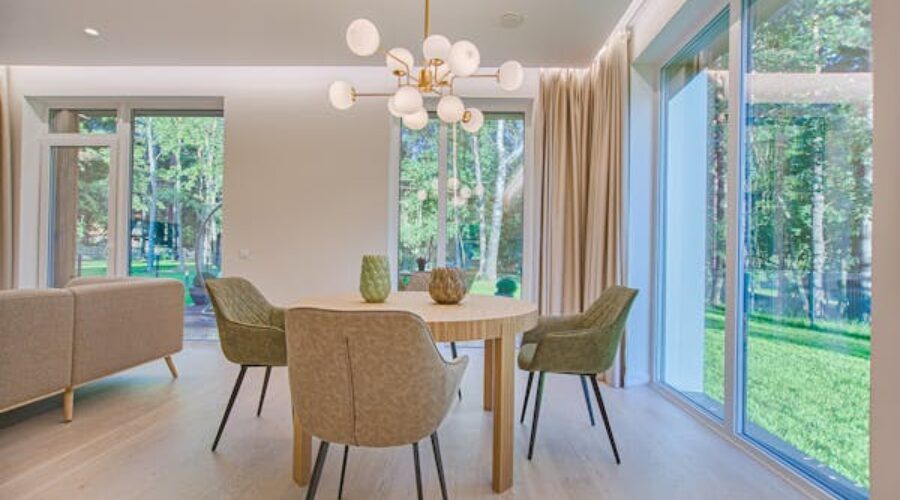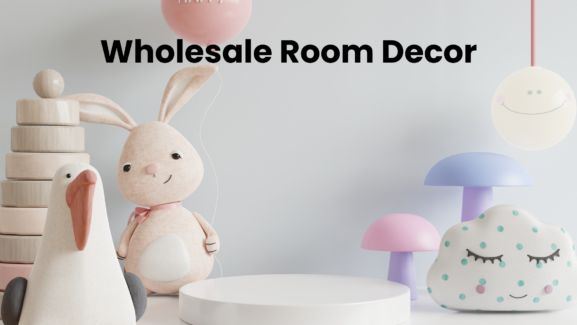Curtains for Living Room: A Complete Guide to Elevating Your Space
When it comes to interior design, few elements make as immediate and lasting an impression as curtains for the living room. These fabric panels do much more than provide privacy or block out sunlight—they bring warmth, color, texture, and style to any space. Whether you’re aiming for minimalist chic, cozy traditional, or modern luxury, the right curtains can instantly set the mood. With so many options available, from sheer to blackout, linen to velvet, and neutral to bold prints, finding the perfect fit can be overwhelming.
Understanding the functional and aesthetic impact of curtains will help you make confident, design-forward choices. In this comprehensive guide, we’ll explore the different types of living room curtains, styling strategies, trending materials, and expert tips for choosing curtains that not only look great but enhance your living space.

Why Curtains for Living Room Matter More Than You Think
Curtains for the living room are often underestimated. Many homeowners consider them an afterthought, installed hastily or picked primarily for utility. But curtains are a foundational design element. They frame your windows, draw the eye upward, soften the architectural lines, and can either complement or redefine your décor.
Beyond their aesthetic function, living room curtains provide insulation, control natural light, and reduce noise. Heavy drapes, for instance, can help maintain room temperature and dampen external sounds, making your living space more comfortable and energy-efficient. In contrast, light and airy curtains invite daylight while preserving a sense of openness and movement.
Whether your living room is bathed in sunlight or tucked into a shaded part of the house, the right curtains allow you to manage brightness, glare, and privacy on your own terms. This balance of form and function is what makes choosing the right curtains for the living room such an essential step in home design.
Popular Types of Curtains for the Living Room
There are several curtain styles that dominate the living room space, each offering its own unique benefits. First are sheer curtains, ideal for softening sunlight without darkening the room. These are perfect for smaller living rooms or urban apartments where space and natural light are limited. They give a light, romantic look and pair beautifully with layered window treatments.
Blackout curtains, on the other hand, are designed for function. They completely block outside light and are great for those who use the living room as a media space or need maximum privacy. These curtains often come in heavier materials like velvet or thick polyester.
Grommet-top curtains and rod-pocket curtains offer different hanging styles. Grommet tops slide smoothly across rods and create clean, modern pleats. Rod-pocket curtains provide a more traditional, gathered look. Tab-top curtains are also common and create a casual yet tailored aesthetic.
Knowing your design style and light preferences will help you select the best type of curtains for your living room. Mixing styles, such as layering sheers with heavier panels, is another popular strategy to balance form and function.
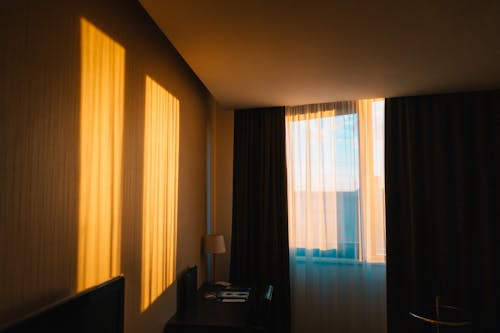
Choosing the Right Fabric: From Linen to Velvet
Fabric plays a huge role in how your living room curtains look and feel. Linen curtains, for example, are lightweight and breathable. They bring a natural, organic texture that works wonderfully in coastal, bohemian, or Scandinavian-inspired living rooms. Linen is perfect for casual elegance and soft filtering of light.
Velvet, on the other hand, creates a bold, luxurious statement. Its rich texture and heavier weight make it suitable for more formal living spaces. Velvet curtains for the living room are not only beautiful—they also offer sound dampening and excellent insulation during colder months.
Cotton and polyester blends are versatile and budget-friendly. These fabrics are easy to care for and come in countless colors and patterns, making them a favorite for everyday family rooms. If you’re looking for something both practical and stylish, these blends are hard to beat.
Silk curtains offer a high-end aesthetic but require more maintenance and are better suited for rooms without heavy sun exposure. Whichever fabric you choose, consider how it drapes, cleans, and complements your existing furnishings.
Color and Pattern: What Works Best in the Living Room?
When selecting curtains for the living room, your choice of color and pattern can dramatically influence the mood of the space. Neutral colors like beige, ivory, gray, and white are timeless and versatile. They make the room feel open, calm, and inviting—ideal for smaller or minimally decorated living rooms.
If your space lacks a focal point or feels too monochrome, patterned curtains can add personality and visual interest. Stripes, florals, geometric prints, or abstract motifs draw the eye and help tie a room’s design elements together. Just be cautious about overwhelming a space with overly bold patterns if your furniture is already colorful or textured.
Bold colors like navy, emerald green, or mustard yellow can make a dramatic statement. These are perfect for creating contrast or highlighting a particular theme. For instance, a deep green velvet curtain adds richness to a mid-century modern living room, while burnt orange curtains can warm up a cool, industrial loft.
The key is to choose a curtain color and pattern that aligns with your wall color, furniture palette, and overall design vision. Sampling fabrics before committing is always a smart move.
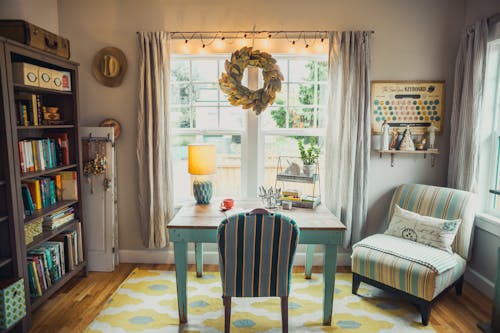
Curtain Length and Width: Getting the Proportions Right
Size matters, especially when it comes to curtains for the living room. Choosing the wrong curtain length or width can throw off the balance of your entire space. Ideally, curtains should hang just above the floor—or even pool slightly at the base for a dramatic effect. Floor-length curtains create vertical lines that make the ceiling feel higher and the room more grand.
Avoid the mistake of using short curtains that only reach the window sill, unless you’re intentionally designing a café or retro-style space. In most living rooms, full-length panels look more refined and modern.
In terms of width, your curtain panels should be 1.5 to 3 times the width of the window, depending on how full you want the curtains to appear when drawn. For a more tailored look, go closer to 1.5x. For a rich, pleated appearance, go up to 3x.
Accurate measurements are crucial. Be sure to measure both height and width before purchasing your curtains to avoid returns or costly alterations. Most online retailers offer size guides, and platforms like Supplier Central provide useful tips for buyers comparing different furniture and curtain suppliers.
Mounting Hardware and Hanging Styles
The hardware you use to hang your curtains plays both a functional and aesthetic role. Curtain rods, brackets, rings, and tiebacks should complement the style of your curtains and the overall décor. For instance, a wrought-iron rod suits traditional or rustic styles, while sleek brass or matte black rods are ideal for modern or industrial interiors.
There are different ways to mount curtains. Installing rods higher than the window frame creates the illusion of taller ceilings—a designer trick that adds elegance without extra cost. Extending the rod beyond the window’s width also makes the window look larger and allows more light in when the curtains are open.
Other hardware elements like finials (the decorative ends of rods) and tiebacks (used to gather curtains at the sides) contribute to the overall style. Choose hardware that matches other room accents like lighting fixtures or door handles for a cohesive look.
Investing in durable, stylish mounting hardware ensures that your curtains for the living room not only function properly but also serve as a seamless part of your design aesthetic.
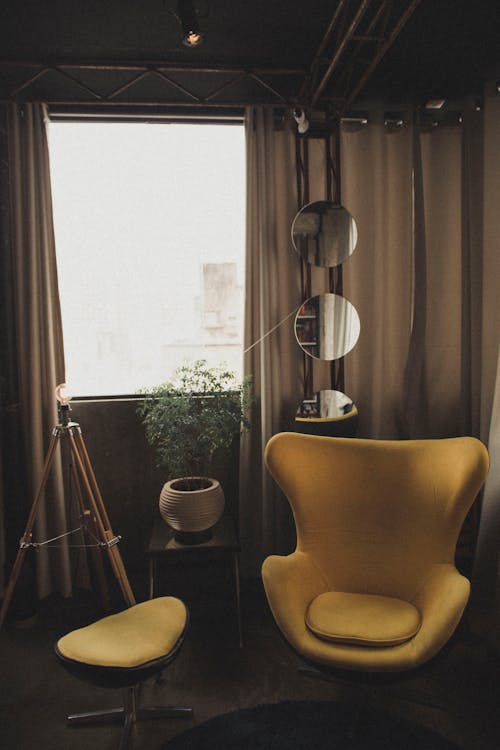
Mixing Curtains with Other Window Treatments
Curtains are versatile, but sometimes pairing them with other window treatments enhances both beauty and utility. Blinds, shades, and shutters can be layered beneath curtains for improved light control, privacy, and insulation. For example, a combination of Roman shades and sheer curtains offers a sophisticated look while allowing for adjustable light throughout the day.
Double curtain rods are a great way to layer sheer and blackout panels. During the day, you can keep the sheer curtains closed for filtered light and privacy. At night, the blackout panels provide darkness and thermal insulation.
This mix-and-match strategy is especially useful in multifunctional living rooms where the mood and lighting requirements change. It also allows you to blend decorative and functional elements—pairing elegance with practicality. Customizing your window treatments doesn’t have to be expensive; many online retailers and interior marketplaces offer bundle deals and professional advice.
Current Trends in Curtains for Living Room Spaces
Curtains have followed broader home décor trends in recent years. One of the strongest trends is organic materials—cotton, linen, and bamboo-blend curtains are gaining popularity for their eco-friendliness and natural texture. Another growing trend is layering textures, combining velvet curtains with woven blinds or pairing patterned curtains with solid shades.
Earthy tones like terracotta, sage, and rust are having a moment, especially in boho and Scandinavian-inspired interiors. At the same time, bold jewel tones and color-blocking designs remain popular for those who love drama and flair.
Custom and made-to-measure curtains are becoming more accessible due to advancements in online retail. Many brands now allow you to input your measurements and preferences for a tailored finish without the need for expensive interior designers.
Also on the rise is tech-integrated curtains, such as motorized or remote-controlled drapes, allowing homeowners to adjust light and privacy with the touch of a button. These are perfect for modern, high-tech living rooms or hard-to-reach windows.
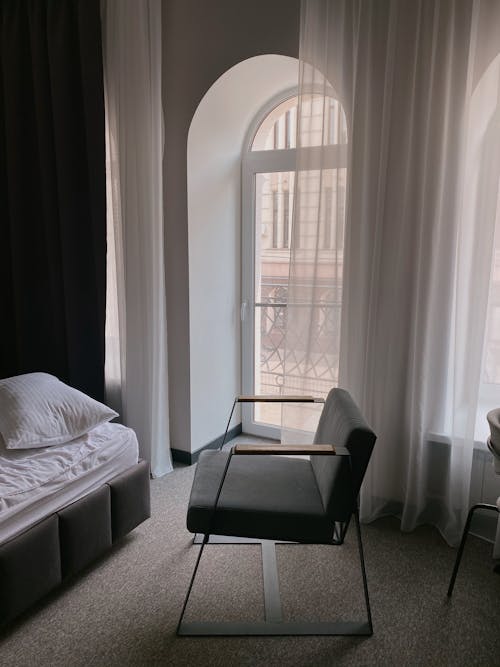
Final Thoughts: The Right Curtains Can Redefine Your Living Room
Curtains for the living room are not just accessories—they are statement pieces that can transform the way your space looks and feels. By choosing the right fabric, color, pattern, and style, you not only enhance your home’s beauty but also increase its comfort and livability. Whether you go for minimalist sheer panels or rich, dramatic drapes, curtains help define the atmosphere and character of your living room.
When shopping, take time to explore various combinations, test samples, and don’t be afraid to mix styles. Use platforms like Supplier Central to discover trusted sources and compare prices for curtains that align with your design vision.
With thoughtful selection and a little creativity, the perfect curtains can turn an ordinary living room into a stunning showcase of personal style.

